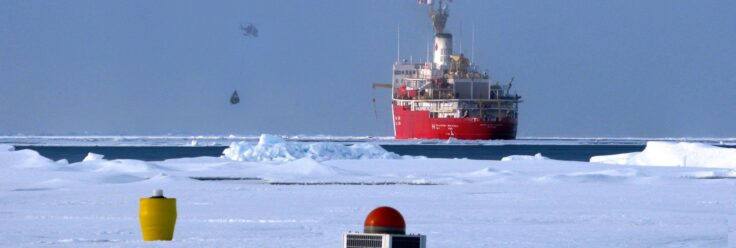TEA-COSI The Environment of the Arctic Climate, Ocean and Sea IceThe Environment of the Arctic Climate, Ocean and Sea Ice (TEA-COSI)
- Start date
- 1 October, 2011
- End date
- 30 September, 2015
The sea ice covering most of the Arctic Ocean in winter (and substantially smaller parts of it in summer) is a large source of freshwater. Large injections of freshwater into saline bodies of water can have an important impact on currents and circulations because of the density differential. Recent studies have shown large quantities of freshwater accumulating in the surface layers of parts of the Arctic Ocean.
One of the important questions TEA-COSI aims to answer is whether increased melting of sea ice in the Arctic Ocean will affect the so-called Thermohaline Circulation (THC). This ocean current moves warm water northeast through the Atlantic Ocean and into the Arctic and causes northern Britain’s climate to be much milder than other places at similar latitudes. Since the THC is driven by water sinking when it encounters the cold waters of the Arctic, large quantities of freshwater may disrupt it as the lower density relative to saline water prevents the sinking of water masses. Such processes and others like it are just some of the ways in which the Arctic Ocean and its sea ice are linked with climate in the rest of the world, and high levels of uncertainty are associated with them.
TEA-COSI scientists gathered data from aboard the Canadian icebreaker CCGS Louis St. Laurent during its 2012 Beaufort Gyre exploration cruise. Using this new data in models of regional Arctic climate and processes will contribute to our understanding of present and future ocean and sea-ice dynamics and their potential impacts on larger-scale circulations. The improved output from these regional models will in turn play an important role in representing the Arctic and its impacts more accurately in larger-scale models.

